“We can go faster than any blue force is ever trained, up into almost Mach 2.0 to show them what it’s like if the enemy were to do that, which is one of their tactics”
Uttered proudly in unison after a briefing before an air-to-air fight, “Have at you!” inspired by the 1975 film “Monty Python and the Holy Grail” signifies being the enemy squadron who will defend its battlefield, regardless of the cost.
Pilots from the 18th Aggressor Squadron (AGRS) take on the role of “Red Air” during large-scale exercises and train “Blue Air” pilots during Red Flag-Alaska (RF-A). Using a red star overlaid by a target on the sleeves of their green flight suits and red flags with a hammer and sickle, they’re marked throughout the mission as experts in enemy tactics.
“Our call in life is to know, teach, and replicate the enemy and be the best bad guys in the business so joint and coalition forces can learn to survive,” said Lt. Col. Julio Rodriguez, 18th AGRS commander. “Our job is to know the enemy, how they fight, and how they think, bringing that into the air, teaching blue forces to stay alive and win the fight.”
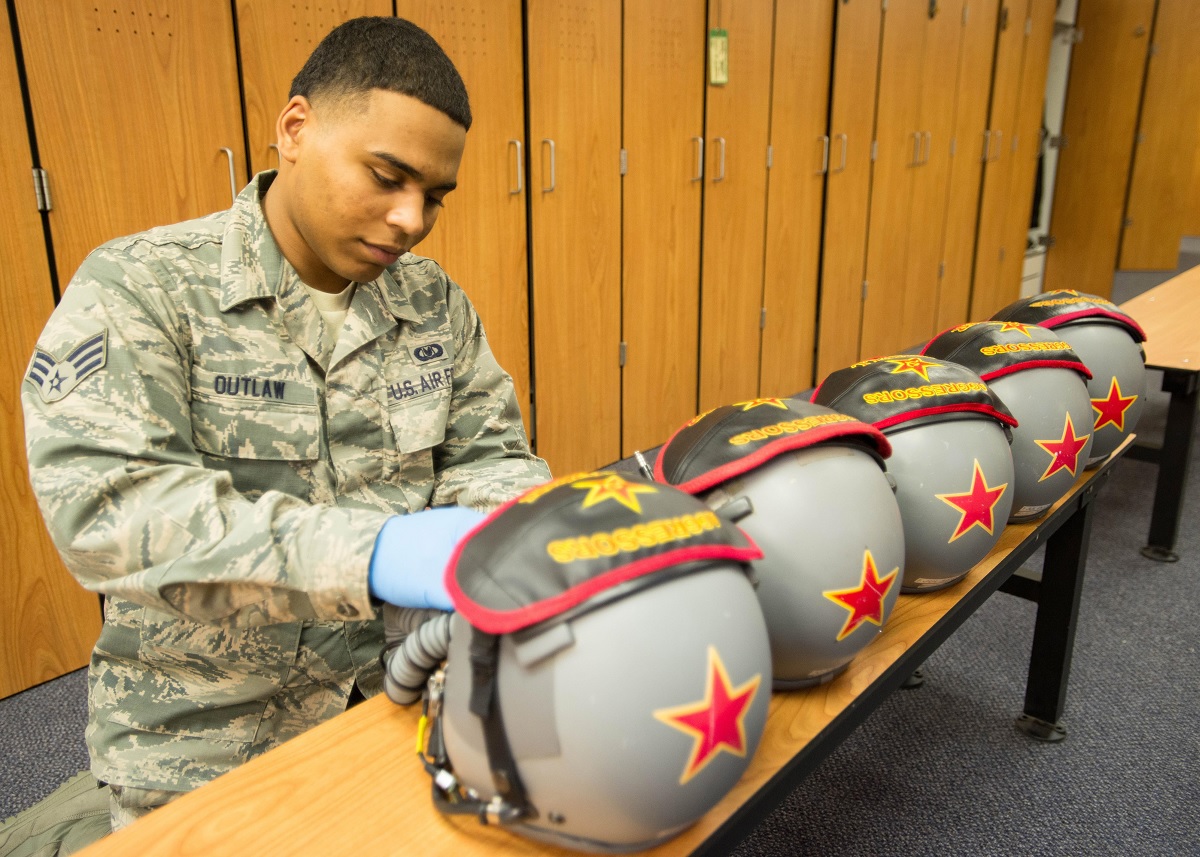
During RF-A and other exercises around the U.S. Pacific Air Forces area of operations, these seasoned pilots use their expertise to train thousands of U.S. Air Force (USAF) joint and coalition partners each year.
“From the youngest lieutenant, the captain, the flight lead, or the mission planner coming into the combat air forces, we want them to know that even though they are highly trained, they still have to look out for the unknown—we provide that unknown,” he said.
The training the Aggressors provide during RF-A integrates various forces into joint, coalition and multilateral units, training from simulated forward operating bases.
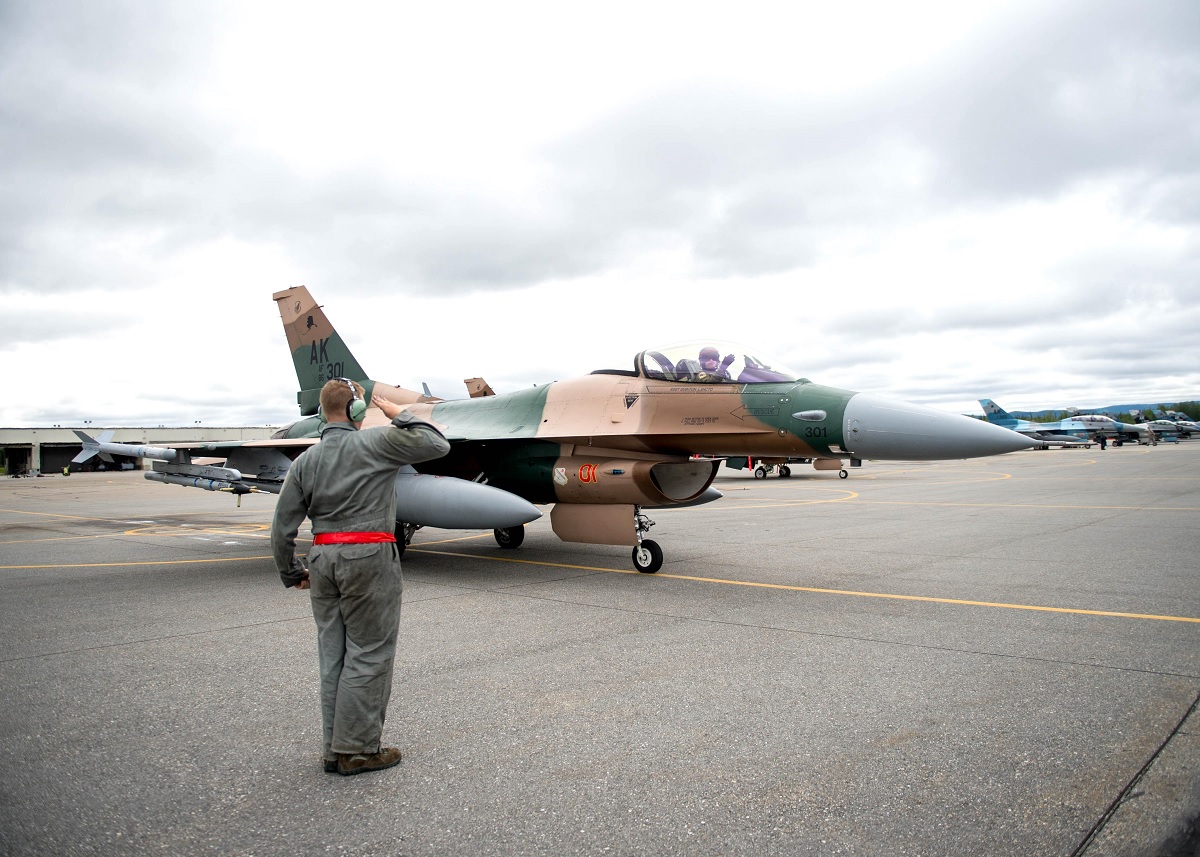
An ‘outside’ perspective
“Planning how to deconflict the threat means less work in the air to get the job done.” said RSAF Lt. Cedric Goh, a 425th Fighter Squadron F-16 Viper pilot who participated in RF-A 16-2, said. “When things happen differently than what was planned, we work as a team to adjust and bring the dynamic scenario back in our favor.”
Goh emphasized the unique training opportunities placed him in a near-real combat situation and that learning to fight in and out while staying alive and covering his wingman was the number one goal.
When he sees the 18th AGRS logo, Goh said he thinks of one thing, “That red star means threat; time to bring the fight to them and kill that enemy.”
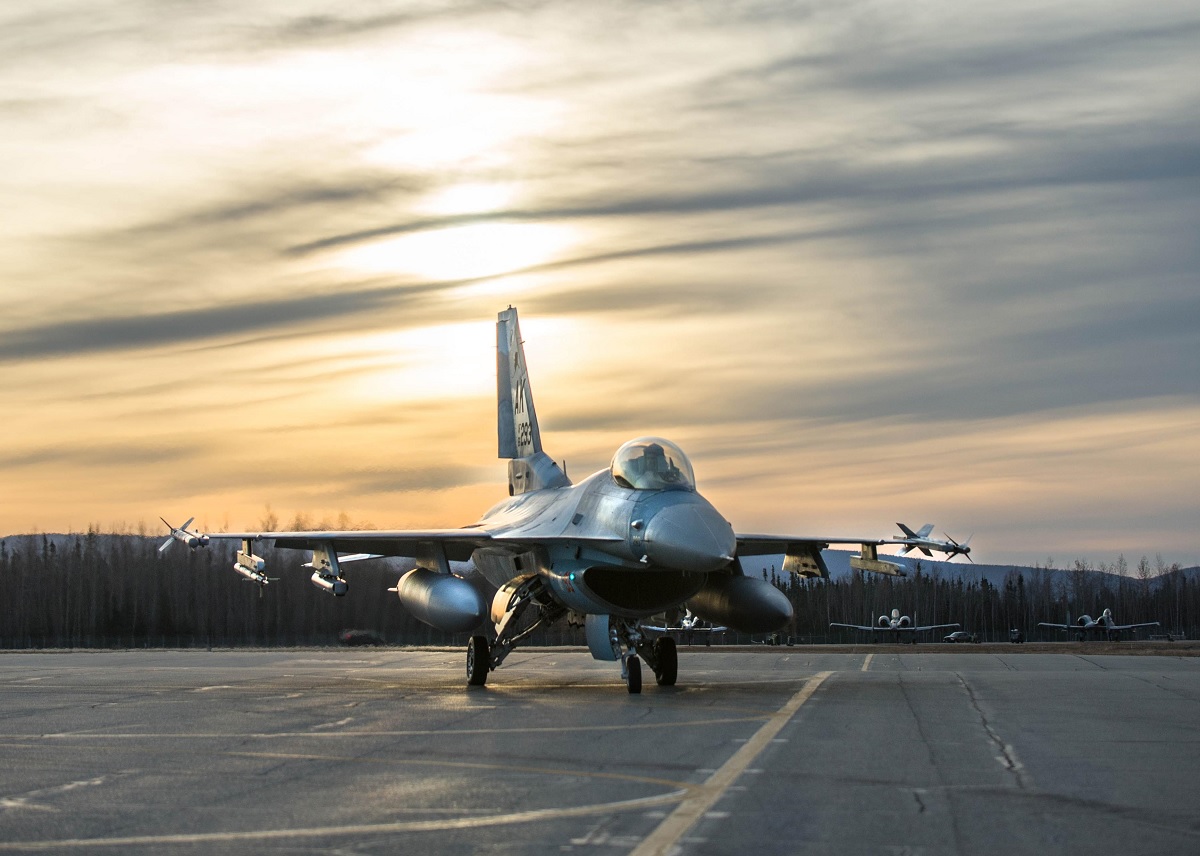
According to Goh, participation in RF-A and working with the 18th AGRS signifies a continued commitment to peace, stability, and alignment within the Indo-Asia-Pacific region.
Valuable training space
RF-A keeps fighters in the air through 10 simulated combat sorties flying within the Joint Pacific Alaska Range Complex (JPARC) which includes one conventional bombing range and two tactical bombing ranges containing 510 different types of targets and 45 threat simulators in more than 67,000 square mile airspace; training space roughly the size of Missouri.
“That large space forces pilots to figure out the logistical problem of working in such a large scale similar to an entire theater of operations,” Rodriguez said. “The multiple uses the JPARC provides is imperative to the success of our training.”
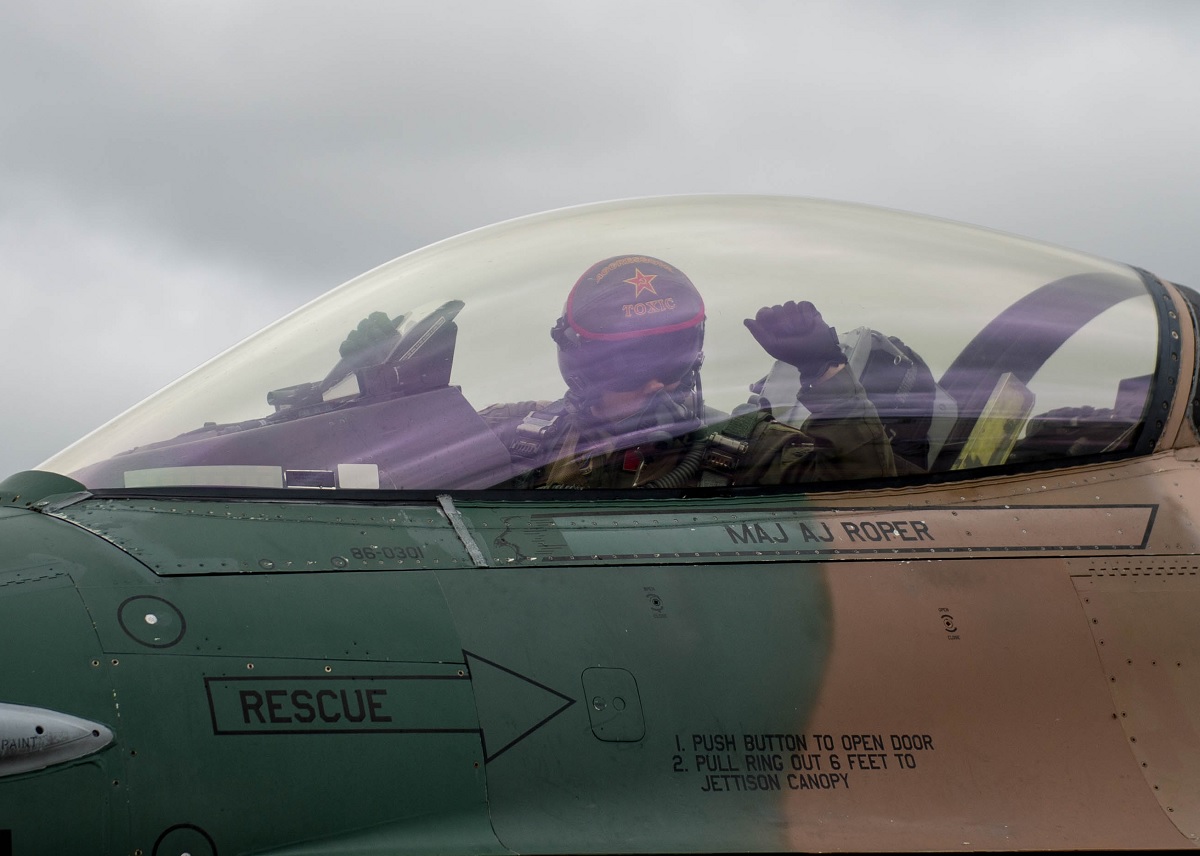
Speed, altitude, and terrain are some of the unfamiliar characteristics pilots may not encounter while training in other airspace.
“We can go faster here than any blue force is ever trained, up into almost Mach 2.0 to show them what it’s like if the enemy were to do that, which is one of their tactics,” Rodriguez added.
The ‘Best of the Best’
Aggressors come from multiple fighter pilot roles in the U.S. Air Force and have had the experience of sitting in the Blue Air ejection seat. The average Aggressor pilot has at least 1,000 fighter hours “behind the stick” and hundreds of hours of study to culminate that experience into becoming one thing…
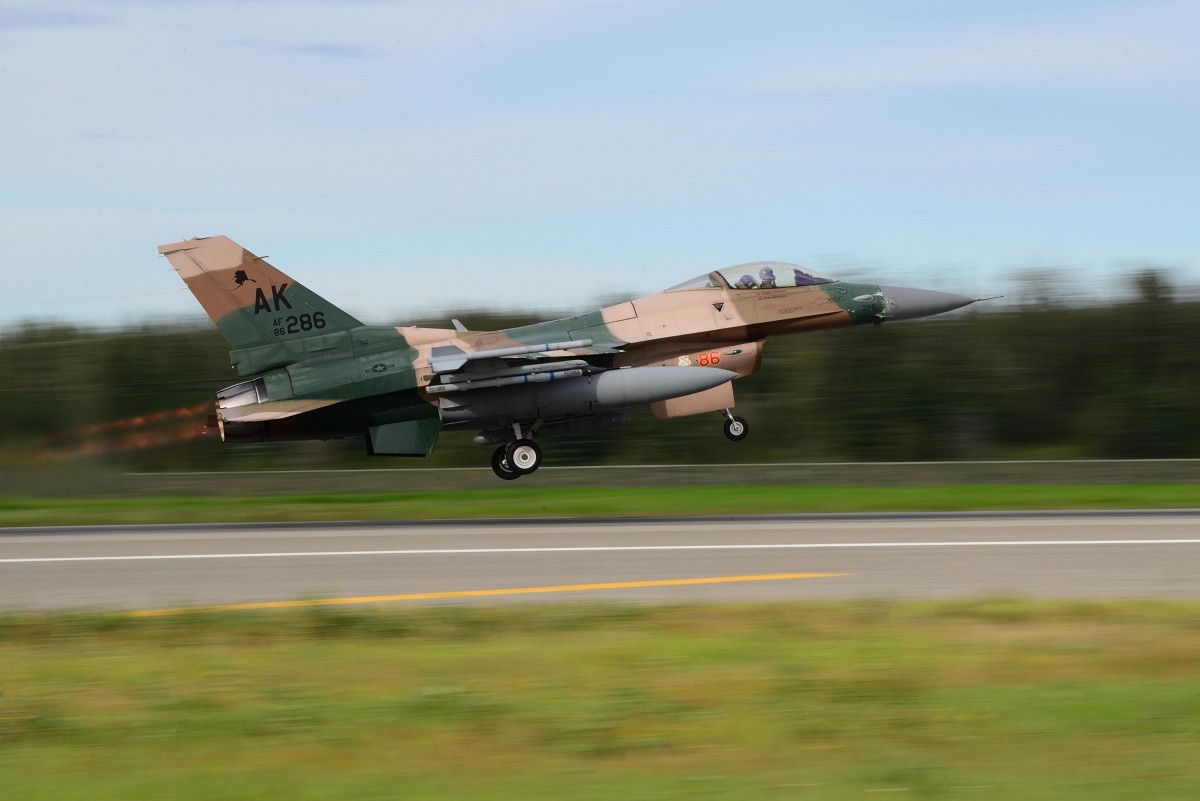
“You have to be bad; being an Aggressor is a different mindset,” he said. “You have to leave the blue we have flown for years. You have to be an Aggressor first and an F-16 pilot second. We have to be professional with our knowledge and honest with our capabilities,” Rodriguez said. “There is a large amount of studying mixed with knowledge from intelligence professionals from across the United States, who provide us with the data on enemy engineering and tactics. We as the operators have to formulate that into what the enemy does and work that into realistic training.”
The most challenging part of living the Aggressor life is the high demand for their capabilities. Rather than Blue Air using internal assets to train, they call on the Aggressors from Eielson and Nellis Air Force Base (AFB), Nevada, to travel around the world to support exercises other than their home flags.
They divide their limited assets into the most valuable training, like RF-A, without burning out the personnel who fly and maintain the jets.
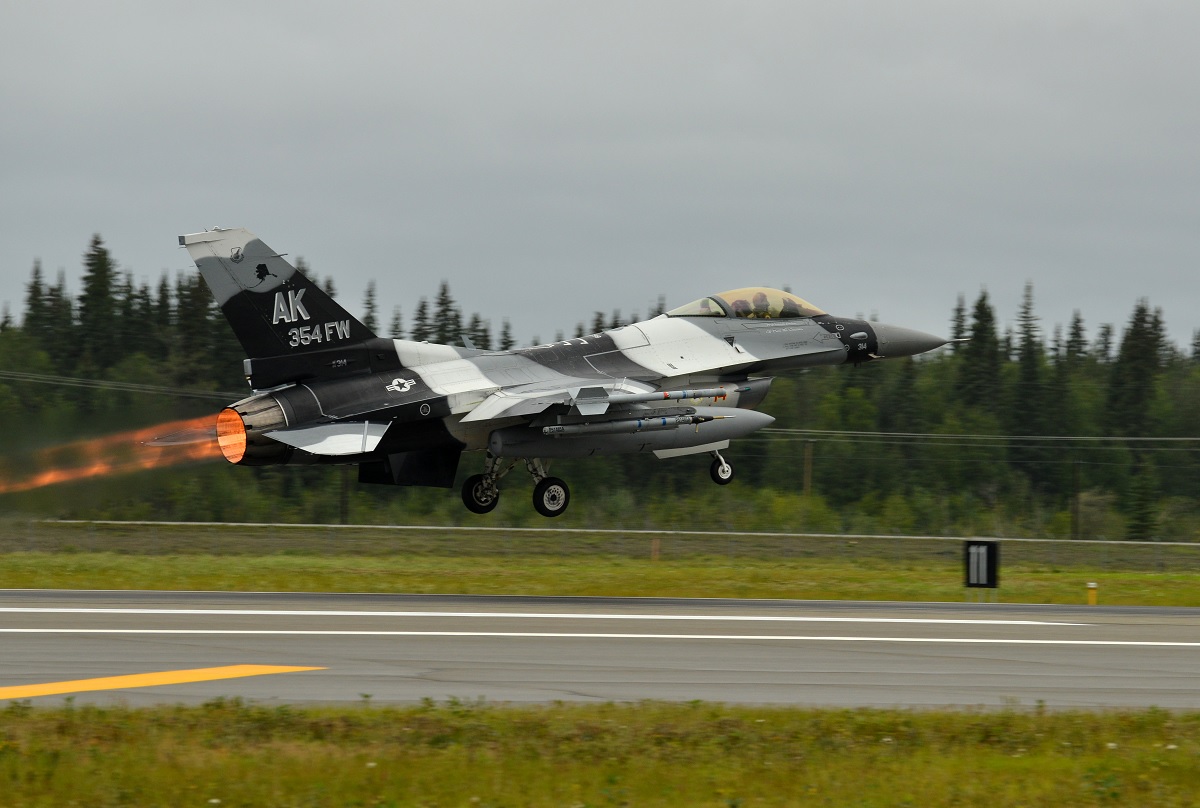
“Our goal is to dominate the skies,” said Rodriguez. “Statistics prove that if you can survive those first 10 sorties, you will most likely [survive] in the long term. If you can do that in a training environment, it is much more beneficial. Yes, they might ‘die’ in the exercise, but we would rather have them die in a simulation where we can debrief later rather than explode into chunks of metal. After a Red Flag, these pilots have those 10 sorties under their belt and they are no doubt the ones who will be able to go out and accomplish a mission.”
However, along with the tempo, there is a reward that comes with constant hard work.
“I love being part of the advisory air with the big red star on the back of my helmet, flying a sortie, and being able to walk up to the Blue Air after and tell them, ‘You did a great job today. You survived. You knew the threat, understood the threat, and accomplished the mission,’” said Rodriguez. “That success, being the best support possible, and seeing the outcome, is my reward. If you know the enemy and know yourself, you are going to win.”

Photo by Airman 1st Class Kyle Johnson, Staff Sgt. Shawn Nickel and Airman 1st Class Cassandra Whitman / U.S. Air Force

